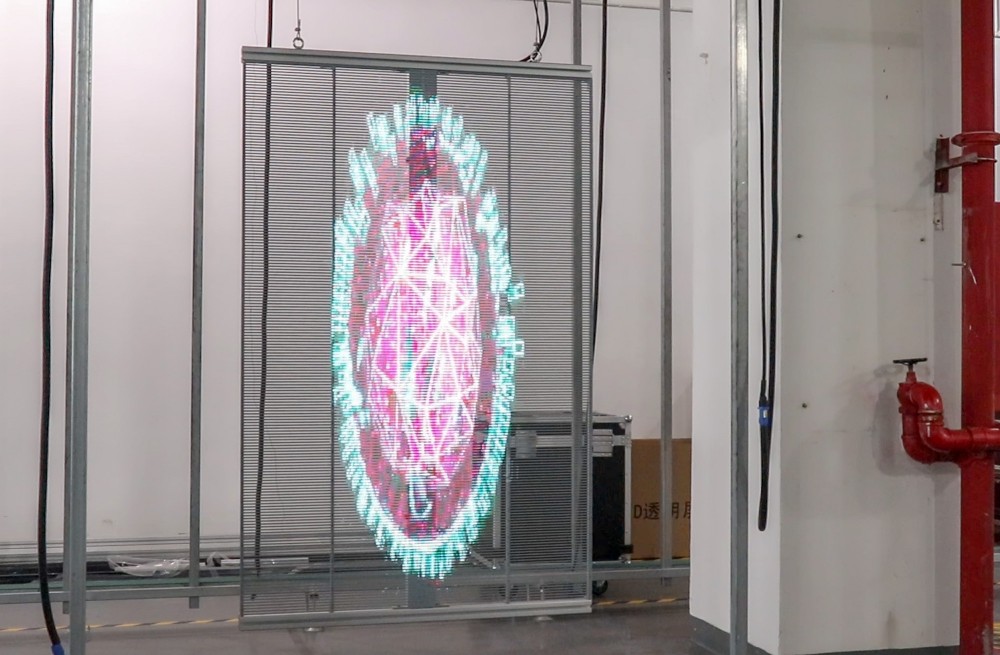
The display quality of the LED display has always been closely related to the constant current driver chip, such as ghosting, dead pixel cross, low gray cast, dark first scan, high contrast coupling, etc., while the line drive is not as a simple scanning requirement Pay attention.
The display quality of LED displays has always been closely related to the constant current drive chip, such as ghosting, dead pixel crosses, low gray color cast, dark first scan, high contrast coupling, etc., and line drive as a simple scanning requirement has not Too much attention. With the development of small pitch, LED display screens also put forward higher requirements for row driving, from pure P-MOSFET to realize row switching to higher integration and multifunctional row driving. The design and selection of line drivers also face six major challenges such as ghost elimination, lamp bead reverse voltage, short circuit caterpillar, open cross, lamp bead VF value is too large, and high contrast coupling.
The scan line is abnormal
When the scan screen is switched, it takes a while for the PMOS switch to turn on and off, and the charge on the row line parasitic capacitance Cr is released. Therefore, when VLED and OUT in the next row are turned on, the undischarged charge of VLED in the previous row is a conduction path. When the row (n) is turned on, the row parasitic capacitance Cr is charged to the VCC potential. When switching to Row (n + 1), a potential difference is formed between Cr and OUT, and the charge is discharged through the lamp beads, which causes the LED lamp to dim.
Therefore, it is necessary to discharge the charge on Cr in advance when changing wires. Generally, a line tube with integrated blanking function can quickly release the charge of the parasitic capacitor Cr by adding a pull-down circuit when switching. The lower the set pull-down potential or blanking voltage VH, the faster the charge on the parasitic capacitance is discharged, and the better the effect of eliminating ghosting.
Lamp beads reverse voltage
The reverse impulse voltage of the lamp beads greatly affects the service life of the lamp beads, and the dead pixels caused by the back pressure have always been the pain points of the LED display, especially the small pitch.
When the output channel is closed, due to the freewheeling effect of the parasitic inductance, the parasitic capacitance at the channel will be continuously charged, forming a high voltage glitch. At this time, the output of the line tube forms a reverse voltage loaded on the lamp beads, so the blanking voltage of the line tube affects the reverse voltage of the lamp beads at the same time. When the voltage at the constant current output channel is fixed, the higher the blanking voltage of the line tube, the smaller the reverse voltage of the lamp bead. Usually the nominal reverse voltage of the lamp bead is 5V. Actually tested by the manufacturer, the back pressure below 1.4V can greatly reduce the dead pixels caused by the back pressure. Therefore, the blanking voltage cannot be too low for the lamp bead back pressure problem. Not lower than VCC-2V.
Short-circuit strip (caterpillar)
When the LED is short-circuited, there will be a long bright phenomenon, which is generally called a short-circuit caterpillar. When the LED lamp bead in the middle is short-circuited, the LED lamp bead in the same column will form a path as shown in the figure below when scanning to the row. If the pressure difference between VLED and point A is greater than the LED lamp bead lighting value, it will form a normal Bright caterpillar.
The biggest difference between the short-circuit caterpillar and the open cross is that as long as the screen is in the scanning state, the short-circuit caterpillar will appear regardless of whether the LED lamp beads display images or not, while the open-circuit caterpillar will only appear when the open lamp bead is lit. Usually by increasing the line tube blanking voltage to make the voltage difference smaller than the LED forward voltage VF, that is, VLED-VHVCC-1.4V, the short-circuit caterpillar problem can be completely solved.
Cross
When an open circuit of the lamp bead appears in the scanning screen and the point is lit, the voltage of channel OUT1 is pulled down to below 0.5V. If the scan line potential blanking voltage VH is 3.5V, a conduction path will be formed for the column of lamp beads, forming an open-circuit caterpillar.
When the lamp bead is open, the channel OUT1 voltage is pulled down below 0.5V or even 0V, and the column parasitic capacitance Cr is affected by the parasitic capacitances C1 and C2. When the Cr potential is pulled down, the LED in the same row as the open lamp bead appears Faintly bright.
Lowering the blanking voltage of the blanking tube can effectively solve the problem of open crosses, that is, the blanking voltage VH<1.4V. Some line tubes in the industry also use adjustable blanking voltage to reduce the blanking voltage to below 1.4V to solve the open cross, but this will increase the LED back pressure and accelerate the LED lamp bead damage and short-circuit caterpillars.

The VF value of the lamp bead is too large
Due to the large VF value of the lamp beads, this column is always on, which is also a problem that plagues user applications. Generally, the nominal forward voltage VF of the green light is 2.4~3.4V. Normally, a green light-emitting voltage difference of 1.8V between the anode and the cathode will make it glow, and the blanking voltage VH of the line tube is too high, which will cause a single row of lamp beads to glow.
Taking the lamp bead forward voltage VF1 = 3.4V as the column, when scanning to the second lamp bead, VOUT and VLED1 are turned on at the same time, the channel terminal voltage: VOUT = VLED1-VF1, the voltage across the other rows V△= VH -VOUT = VH-VLED1 + VF1, if V△> 1.8V, it may be on all the time, that is, VH-VLED1 + VF1> 1.8V, where VLED = VCC (ignoring the voltage drop of the line tube), so VH> VCC-1.6 V is not conducive to solving the problem of constant brightness caused by excessive VF value of the lamp beads.
High contrast coupling
High-contrast coupling means that bright pictures are superimposed on a low-brightness background, and the low-brightness pictures and high-brightness pictures are in the same color cast and dark area. The high-contrast coupling phenomenon is caused by the column channel passing through the row tube. By designing a clamping voltage method to reduce the line tube blanking voltage, that is, keeping it at a certain level after discharge, the high contrast coupling can be improved to a certain extent. However, this design method will cause problems such as darker short-circuit columns, low gray and red colors, and large VF values of the lamp beads. From the perspective of row driving, the high-contrast coupling can be improved by reducing the blanking voltage, but this will cause the lamp beads to have a larger reverse voltage.
In summary, the selection of the blanking voltage of the line tube faces the challenges of the above six main problems, and there are certain challenges respectively, and the blanking voltage cannot be too high or too low. Usually, the cross point can be eliminated by constant current drive detection, because too low blanking voltage will reduce the long-term reliability of the lamp beads. In order to fully deal with various application problems, a blanking voltage of 3V~3.4V (VCC = 5V) is a reasonable choice. It can meet the design requirements of various scanning modules of users, so as to reasonably solve various application problems.


